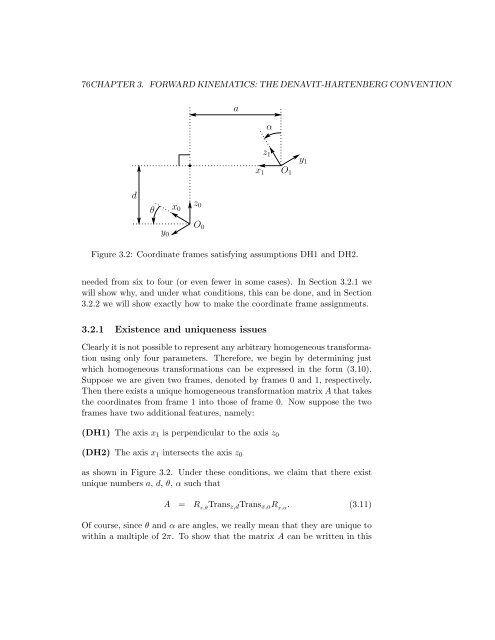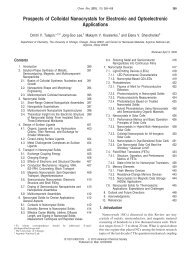FORWARD KINEMATICS: THE DENAVIT-HARTENBERG ...
FORWARD KINEMATICS: THE DENAVIT-HARTENBERG ...
FORWARD KINEMATICS: THE DENAVIT-HARTENBERG ...
Create successful ePaper yourself
Turn your PDF publications into a flip-book with our unique Google optimized e-Paper software.
76CHAPTER 3. <strong>FORWARD</strong> <strong>KINEMATICS</strong>: <strong>THE</strong> <strong>DENAVIT</strong>-<strong>HARTENBERG</strong> CONVENTION<br />
d<br />
θ<br />
y0<br />
x0<br />
z0<br />
O0<br />
Figure 3.2: Coordinate frames satisfying assumptions DH1 and DH2.<br />
needed from six to four (or even fewer in some cases). In Section 3.2.1 we<br />
will show why, and under what conditions, this can be done, and in Section<br />
3.2.2 we will show exactly how to make the coordinate frame assignments.<br />
3.2.1 Existence and uniqueness issues<br />
Clearly it is not possible to represent any arbitrary homogeneous transformation<br />
using only four parameters. Therefore, we begin by determining just<br />
which homogeneous transformations can be expressed in the form (3.10).<br />
Suppose we are given two frames, denoted by frames 0 and 1, respectively.<br />
Then there exists a unique homogeneous transformation matrix A that takes<br />
the coordinates from frame 1 into those of frame 0. Now suppose the two<br />
frames have two additional features, namely:<br />
(DH1) The axis x1 is perpendicular to the axis z0<br />
(DH2) The axis x1 intersects the axis z0<br />
as shown in Figure 3.2. Under these conditions, we claim that there exist<br />
unique numbers a, d, θ, α such that<br />
a<br />
x1<br />
α<br />
z1<br />
O1<br />
A = R z,θTransz,dTransx,aR x,α. (3.11)<br />
Of course, since θ and α are angles, we really mean that they are unique to<br />
within a multiple of 2π. To show that the matrix A can be written in this<br />
y1
















